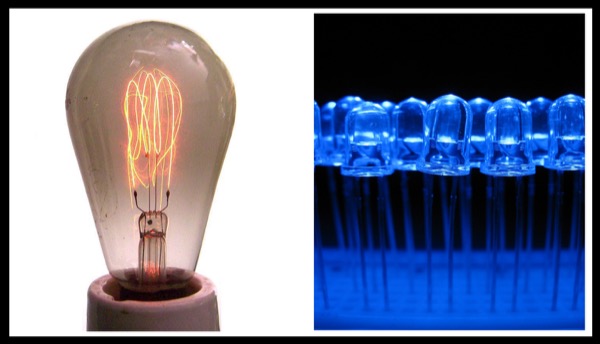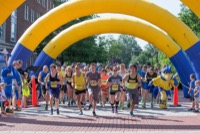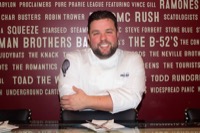
Lighting the future
'Green Light' symposium illuminates connections between art and science
(Editor's note: The "Green Light" symposium will not be held Sept. 25 due to transportation problems anticipated in the Philadelphia region as Pope Francis visits during the 2015 World Meeting of Families. A new date for the symposium will be announced in the near future.)
8:06 a.m., Aug. 5, 2015--The University of Delaware will host a daylong symposium on Friday, Sept. 25, bringing together industry leaders, artists, designers and scholars to explore the future of artificial lighting.
“Green Light: Prospects in Lighting Design and Technology” will be held from 9 a.m. to 7 p.m. in Clayton Hall on the University’s Newark campus. Registration, at $55 per person or $25 for full-time students with ID from any institution, is now available at this website.
Events Stories
June 5: Blue Hen 5K
June 6-9: Food and culture series
Urban futures and strategic design consultant Marco Bevolo will deliver the keynote address, “Create the Livable City,” about the approach taken by Philips Lighting’s city.people.light project from its beginning in 1996 through this year.
The international city.people.light award was created by Philips and the LUCI (Lighting Urban Community International) Association to recognize cities, urban planners, architects and lighting designers for projects that maximize sustainability and make cities more livable.
In his address, Bevolo will present the latest results of research that he and Lighting Design Collective founder Tapio Rosenius conducted on behalf of Philips. Researchers conducted a three‐year study involving more than 200 European architects, urban planners and academics, as well as other leading professionals from architectural firms and design programs.
Other featured speakers at the symposium are Peter Y. Ngai, vice president of OLED Lighting at Acuity Brands, whose talk is titled “OLED Lighting: Where Design Embraces Technology”; Giana Phelan, director of business development for OLEDWorks, “There Is Something About That Light”; Linnaea Tillett of Tillett Lighting Design, “The Dark Arts: How Light Connects the Civic, the Poetic and the Psyche in the Urban Landscape”; Anne Militello of Vortex Lighting, “Spotlight on Creative Expression and the Surprising Power of Crossing Genres”; and Susanne Seitinger, city innovations manager for Philips Color Kinetics, “Exploring New Pattern Languages: City Lighting Design for the 21st Century.”
Featured speakers from UD are Sandy Isenstadt, professor of art history and director of UD’s Center for Material Culture Studies, with a talk titled “Good Night: A Short History of Urban Light,” and Thomas M. Powers, associate professor of philosophy and founding director of UD’s Center for Science, Ethics and Public Policy, “The Dark Side of Light.”
Capping the day’s events will be a panel discussion among those responsible for executing Philadelphia’s June 5th Memorial Park, a project to honor the six lives lost in the collapse of the Salvation Army store on June 5, 2013. Nancy Winkler, co-chair of the project, Alfred Borden of The Lighting Practice, educator-artist Barb Fox, and Scott Aker of the Institute for Architectural Research will discuss their interdisciplinary, collaborative process.
Registration will begin at 9 a.m. on Sept. 25, with the program itself running from 10 a.m. until 5:40 p.m., followed by a reception at 5:45 p.m.
Connections and Intersections
The event is the second in “Art and Science: Connections and Intersections,” a series of symposiums dedicated to the seamless connections between the visual arts and the sciences.
By examining topics that bind research in both the arts and sciences, the symposiums are part of UD’s efforts to familiarize a diverse audience from business, technology, the arts and academia, as well as alumni and friends of the University, with its interdisciplinary activities and its commitment to public humanities.
“Green Light” is a collaboration among the departments of Art and Art History, the Center for Material Culture Studies, the Harker Interdisciplinary Science and Engineering Laboratory and the College of Engineering.
Funding is provided by the Office of the Provost, the Center for Material Culture Studies and the colleges of Arts and Sciences and of Engineering.
Article by Ann Manser
Illustration by Sandy Isenstadt








